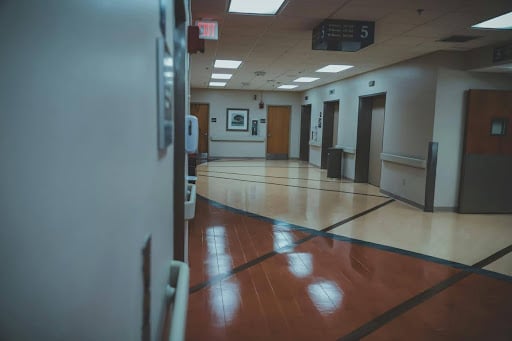Choosing a new flooring system is one of the most important investments a sports facility manager can make. Floors are not just surfaces. They set the foundation for athlete performance, safety and the overall versatility of an athletic facility.
A wrong choice can lead to higher maintenance costs, shortened lifespan or injuries that undermine trust in the facility. The right choice, however, can create a competitive edge and ensure the venue remains functional and profitable for years to come.
How Do I Choose the Right Flooring for a Multi-Purpose vs. Single-Sport Facility?
Athletic flooring designed for one dedicated sport has very different requirements from a surface that needs to handle a wide range of activities.
- Multi-purpose facilities need durability and flexibility. A recreation center, school gym or community hall may host basketball one day, volleyball the next and a graduation ceremony during the weekend. In these settings, hardwood designed solely for basketball can wear out quickly under rolling loads from bleachers, chairs and equipment. Synthetic flooring, such as polyurethane or vinyl, is often better suited because it withstands heavy use, is easier to clean and can handle non-sport events without sustaining significant damage.
- Single-sport facilities focus on performance optimization. A dedicated basketball training center, for example, can invest in high-grade maple hardwood flooring for superior ball response and traction. However, an indoor soccer arena would benefit most from turf that replicates the feel of natural grass.
So, to find the right indoor sport flooring, first define its true purpose. This way, you can maximize value without overspending on features you don’t need.
What Is the True Cost of a New Flooring System? (Beyond the Initial Price)
When it comes to financial considerations, most people often make decisions based on the upfront figure on a proposal. However, the actual cost of a new flooring system extends far beyond the initial purchase price. You need to evaluate the long-term total cost of ownership, such as:
- Maintenance requirements: Factor in the cost of maintaining the system, such as cleaning, recoating, dusting, moisture control and resurfacing.
- Lifespan: How long will the system last before it needs to be replaced?
- Repair costs: If damage occurs, can you spot-repair the system, or do you need to replace large sections of it?
- Downtime: Factor in installation speed and future repair logistics, as the facility will lose revenue every day the floor can’t be used.
Although a floor may cost more today, it will save you a lot in the long run if it requires less intensive care.
How Can a New Floor System Enhance Athlete Safety and Performance?
According to the Indoor sports flooring specialists at Comflors, modern sports flooring systems are designed to enhance player safety and performance with:
- Shock absorption: They are engineered with energy-absorbing subfloors and cushioned materials to absorb impact and reduce stress on joints. This is great for injury prevention.
- Surface traction: They provide a reliable grip without being overly abrasive, enabling athletes to cut, pivot and accelerate with confidence.
- Consistent performance: For sports like basketball, they ensure reliable ball bounce and rebound, which helps the athlete develop better footwork.
- Responsiveness and energy return: They provide the right amount of underfoot “give,” allowing athletes to move explosively with less wasted effort.
What Are the Key Considerations for Installation and Long-Term Maintenance?
Even the best flooring system will fail prematurely if not installed correctly. One of the most critical aspects is the subfloor. If the base is not prepared correctly, you will likely experience issues such as unevenness, dead spots or excessive wear sooner.
A well-built subfloor ensures proper shock absorption, load distribution and long-term stability. That’s why it’s essential to work with specialists in indoor sports flooring. The Indoor sports flooring specialists at Comflors ensure every project is completed to the highest standard, from subfloor preparation to final finishing.
In addition, have a tailored maintenance plan. Different indoor sports flooring systems have varying care requirements. Facility managers should be familiar with the correct cleaning methods, establish a resurfacing schedule and regularly inspect the floor for signs of wear and tear.
Conclusion
Choosing the right sports flooring is a long-term investment in the health of athletes, reputation of the facility and financial sustainability. The good news is that the Indoor sports flooring specialists like Comflors can help you find the right solution when installing a new sports flooring system, whether it’s gym flooring or baseball flooring.

